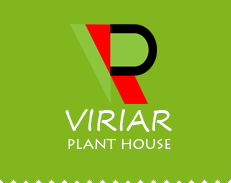VIRIAR
Cycas pectinata - Himalayan Sago - 2 X fresh seeds
Cycas pectinata - Himalayan Sago - 2 X fresh seeds
No se pudo cargar la disponibilidad de retiro
Plant Description
Name: Cycas pectinata
Common Name: Fern Palm, Himalayan Cycad, Pectinate Cycad
Cycas pectinata, commonly known as the Fern Palm, Himalayan Cycad, or Pectinate Cycad, is a striking and ancient plant species belonging to the Cycadaceae family. This cycad is native to the eastern Himalayas and surrounding regions, including parts of India, Nepal, Bhutan, Myanmar, and southern China. It is revered for its prehistoric appearance, with features that have remained unchanged for millions of years, making it a living fossil.
The Fern Palm can grow into a large, tree-like cycad, reaching heights of 3-10 meters (10-33 feet), with a trunk diameter of up to 40 cm (16 inches). The trunk is typically solitary, topped with a crown of long, arching, feathery fronds that can grow up to 3 meters (10 feet) long. The leaves are pinnate and dark green, with numerous narrow, linear leaflets arranged in a pectinate (comb-like) pattern, which gives the plant its name. This cycad is dioecious, meaning individual plants are either male or female, with males producing cone-like structures and females producing larger, leafy structures that house seeds.
Cultivation of Cycas pectinata
Conditions:
- Light: Cycas pectinata thrives in full sun to partial shade. While it can tolerate some shade, it performs best in bright light, which promotes healthier growth and more robust fronds.
- Temperature: This cycad prefers warm, tropical to subtropical climates, with temperatures ranging from 20-30 °C (68-86 °F). It can tolerate cooler temperatures down to about 5 °C (41 °F) but requires protection from frost. It is suitable for USDA zones 9-11.
- Soil: The Fern Palm prefers well-draining, sandy or loamy soils with a slightly acidic to neutral pH. It can adapt to various soil types but thrives in soils rich in organic matter. Proper drainage is essential to prevent root rot.
- Water: Cycas pectinata is relatively drought-tolerant once established but benefits from regular watering, especially during the growing season. The soil should be kept consistently moist but not waterlogged. Reduce watering during the winter months when the plant is not actively growing.
Planting and Care:
- Planting: Choose a location with full sun to partial shade and well-draining soil. If planting in the ground, ensure there is enough space for the plant to grow without being crowded by other vegetation. For container planting, use a pot with good drainage and a well-draining, sandy potting mix.
- Fertilization: Fertilize Cycas pectinata with a balanced, slow-release fertilizer, preferably one formulated for cycads or palms. Apply fertilizer 2-3 times during the growing season to support healthy growth. Avoid over-fertilization, as cycads are sensitive to excessive nutrients.
- Maintenance: Prune old, yellowing fronds to maintain the plant's appearance and encourage new growth. Be cautious when handling the plant, as its leaves and trunk may have sharp edges. Regularly inspect the plant for pests such as scale insects and treat them accordingly.
Growing from Seeds
- Seed Preparation: Cycad seeds have a hard outer shell, so soaking them in warm water for 24-48 hours before sowing can help improve germination rates. Some growers may also scarify the seeds slightly to further encourage germination.
- Sowing: Sow the seeds in a well-draining seed-starting mix, such as a blend of sand, perlite, and peat. Place the seeds horizontally or slightly buried in the soil, ensuring they are just covered with the mix.
- Germination Conditions: Place the seed tray in a warm, humid environment with temperatures around 25-30 °C (77-86 °F). Maintain consistent moisture without waterlogging the soil. Germination can be slow, often taking several months to a year.
- Care for Seedlings: Once seedlings emerge, provide them with bright, indirect light and keep the soil moist. As they grow, gradually acclimate them to more direct sunlight. Transplant seedlings into larger pots or directly into the garden once they are large enough to handle.
Cycas pectinata is a majestic and resilient plant that brings a touch of ancient beauty to gardens and landscapes. Its bold, feathery fronds and tree-like stature make it a focal point in any tropical or subtropical garden.
Shipping & Returns
Shipping & Returns












